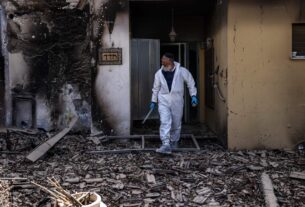Be’er Sheva – an ancient city with a long history of successfully facing vicious enemies – is home to a shopping mall that claims to be the biggest in the Middle East, and also turns out to be one of the safest and most secure in the country. The Grand Kanyon (pun intended)’s security arrangements, however, are rarely discussed in its advertising campaign.
A visit by JewishPress.com to the mall showed that architects and designers made sure every shopper is safe in the event of a rocket attack. For a huge mall, that’s a complicated task: Grand Kanyon solved it by placing a large bomb shelter right next to each rest room on every floor in the mall.
‘);
_avp.push({ tagid: article_top_ad_tagid, alias: ‘/’, type: ‘banner’, zid: ThisAdID, pid: 16, onscroll: 0 });
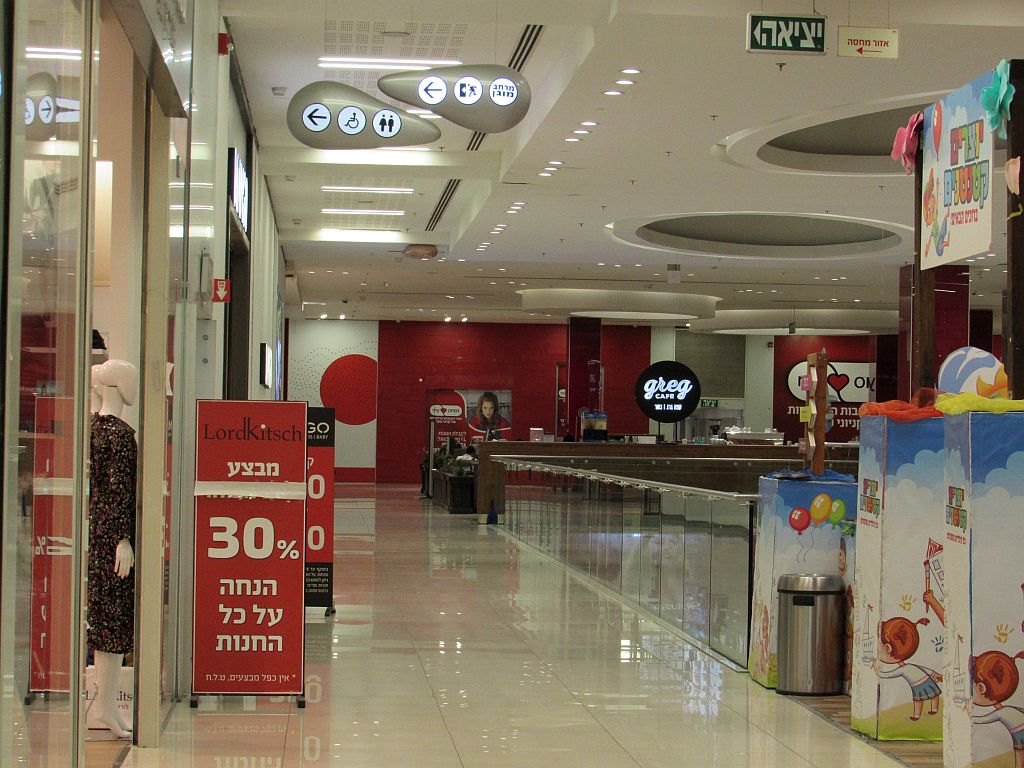
This means there is a bomb shelter on each side of each floor, at each end of the mall – four to a floor.
How weird is it for a city to have reached the point that a shopping mall is forced to integrate bomb shelters into its design? In this mall, they have made an effort to minimize the horror and make the necessity as elegant as possible.
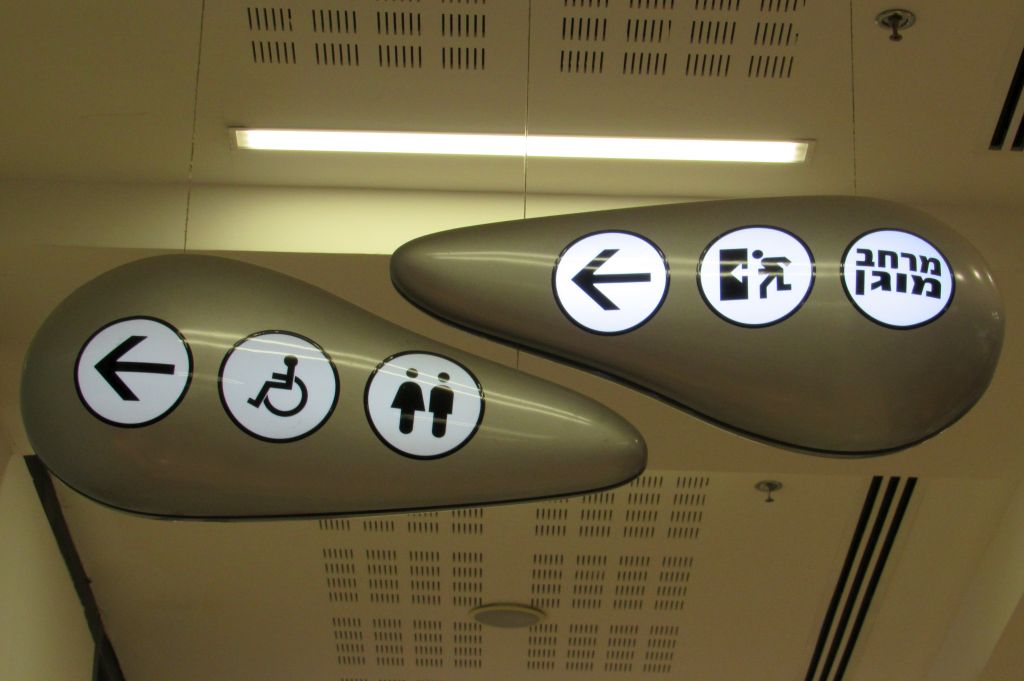
People in Be’er Sheva have 60 seconds to reach a safe space during a missile attack from Gaza. If they are shopping at Grand Kanyon, they are always within a minute of a bomb shelter, even if they have to grab a child and evacuate a store.
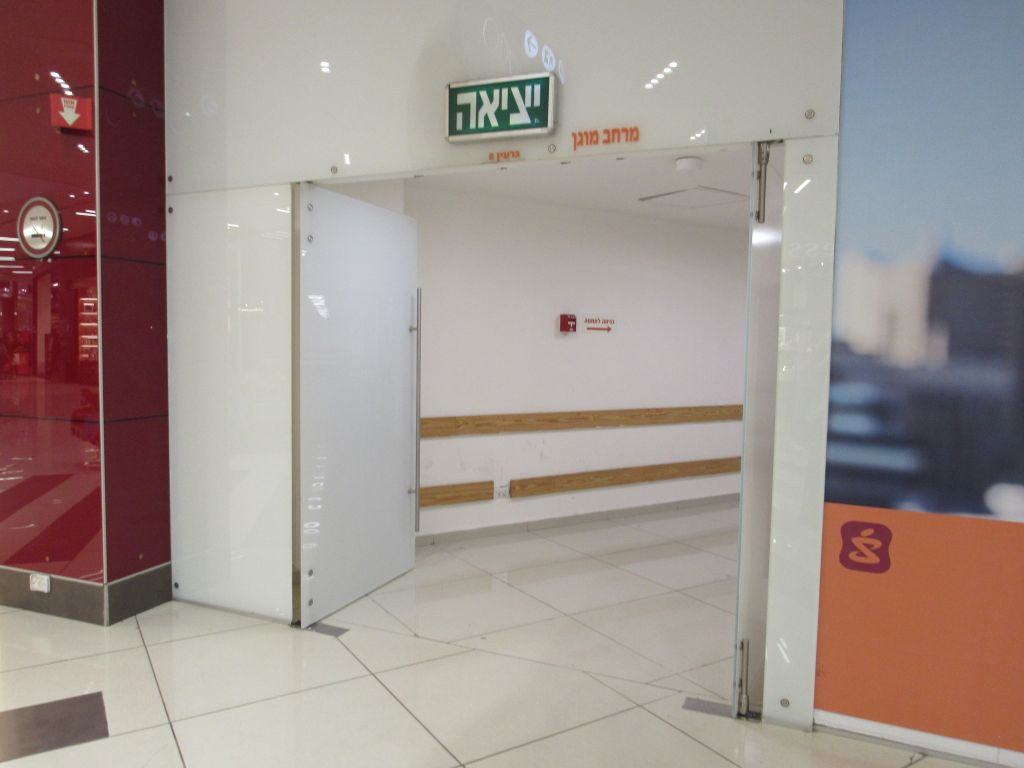
The bomb shelters are located within seconds of the exits from the stores into the halls where rest rooms are located. The shelters themselves are equipped with outlets for telephone, television and electrical power, and each even has an escape hatch as well. They are large, clean and well-lit. But they cannot distract from their main purpose — to keep people safe from rocket fire.
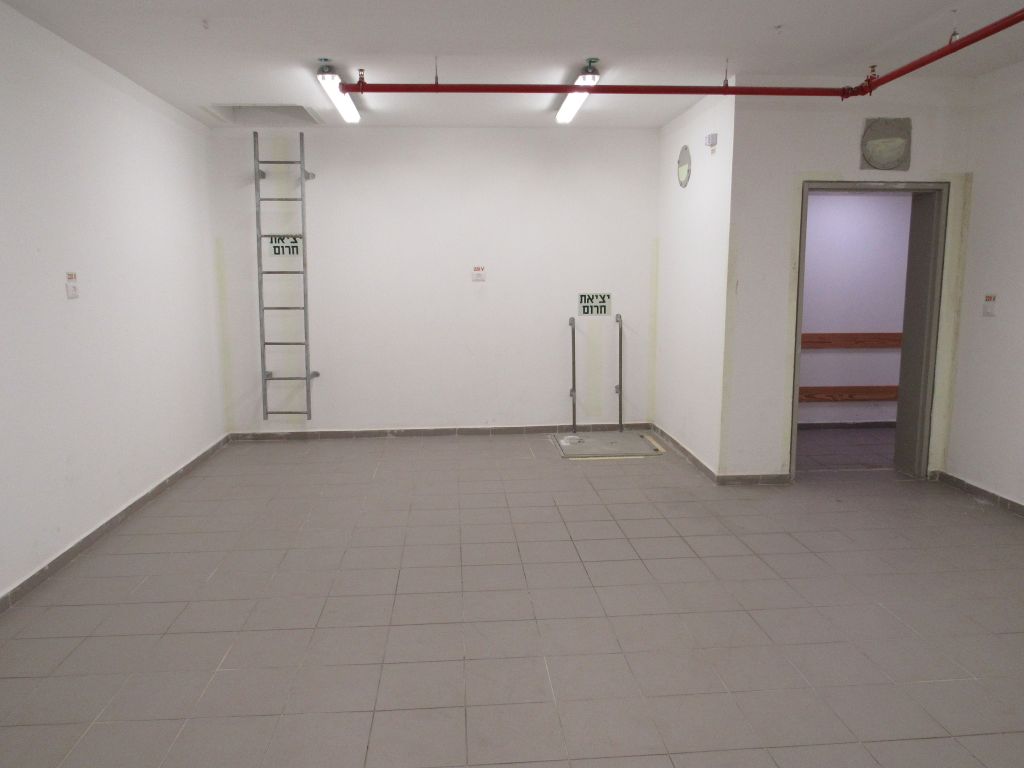
At the Motzetzim baby good supply store around the corner from the Food Court on the lower level, saleswoman Tali told JewishPress.com on Saturday night, “We’ve talked about the timing and what we have to do to evacuate the store — also how long it will take us to get to the shelter after making sure everyone is out safely.”
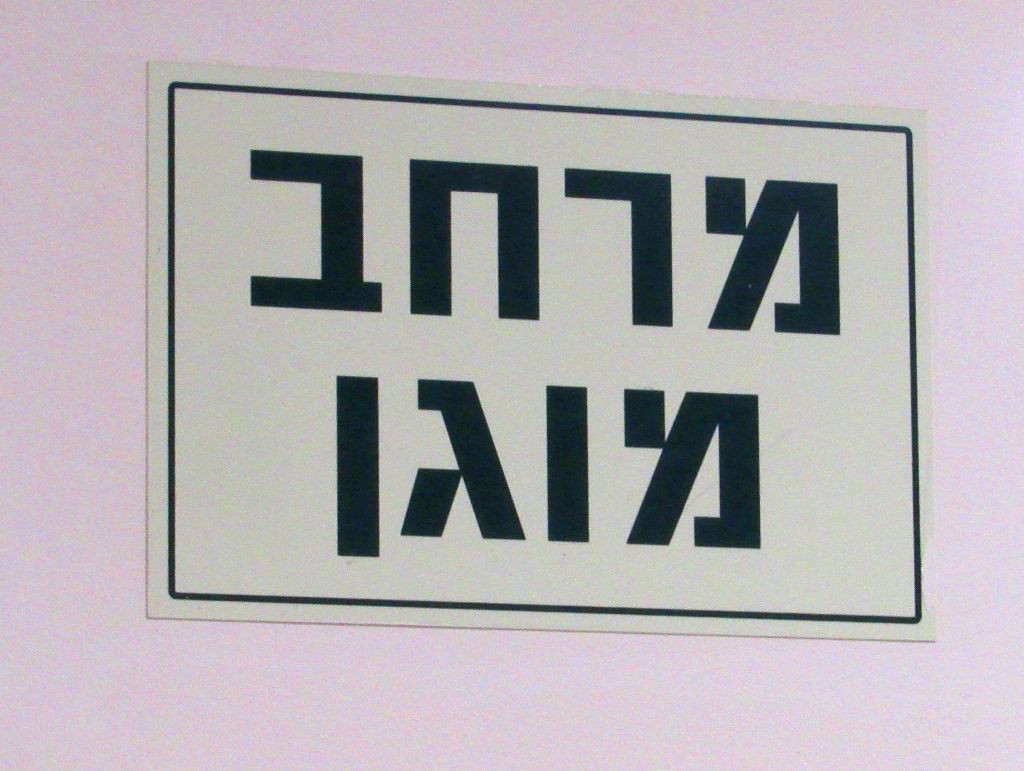
A fluent English speaker who completed her military service with the IDF about six months ago, Tali is a resident of Be’er Sheva, and said this past Friday night her bedroom became quite crowded when the Red Alert incoming rocket siren activated in the city at 2 am.
“My room is the mamad (built-in bomb shelter) in our apartment, which is on the sixth floor of our nine-story building, so the rest of the family came to my room until we heard “Boom! Boom!” And then we knew that either the rockets had exploded somewhere, or the Iron Dome had taken them down.”
Was she scared? “No. We are safe in the mamad,” she said. But she added that she is exasperated.
“I would be willing to put up with having to be in the bomb shelter for as long as necessary if something was being accomplished. But I question the value of a single targeted assassination when we get 450 rockets back with all the damage and trauma and injuries and once again start something we do not finish that comes with endless ceasefire violations,” she said.
Does she think Blue and White party leader Benny Gantz, a former IDF Chief of Staff, would have done a better job?
“You know, I voted twice for Gantz – in the past two elections – because he was a chief of staff and because I was so recently in the military there is still that feeling of loyalty to a commanding officer,” she smiled. “But,” she hesitated, “I feel . . . betrayed, disappointed. I don’t have the words for it. I don’t understand how he can come from where he came from, and then consider inviting Arab parties who clearly want to destroy us.”
And if there is a third election?
“It was a waste the first two times. Why should it be any different this time around? Blue and White is out. And there is no way to know if Bibi is doing what he is doing in order to avoid jail, or any other reason. So I don’t know.”
The military operation carried out before dawn on November 12 to assassinate Bahaa Abu al-Ata, the commander of the northern brigade of the Palestinian Islamic Jihad (PIJ) terror organization and his wife in the Sajaiya neighborhood in northern Gaza instantly triggered massive rocket attacks against southern, and then central Israel as well.
In response, Israel carried out a 48-hour military operation in response called Operation Black Belt, which ended with a so-called “ceasefire” brokered by Egypt, but which was promptly violated, repeatedly, by the PIJ terror group and then, a day later, by Hamas as well – which until that point had not entered the conflict at all.
The costs of Operation Black Belt totaled as follows:
• Magen David Adom EMTs and paramedics treated 77 people, all of whom sustained minor injuries, including three with shrapnel wounds. An eight-year-old girl collapsed with arrhythmia brought on from stress during a Red Alert siren; she was rushed to the hospital and remains in serious condition. Another 29 sustained minor injuries running for bomb shelters, and 31 were treated for shock and severe anxiety.
• A number of homes in the cities of Sderot, Ashkelon and Netivot were badly damaged.
• Roads near the Gaza border were closed, trains in southern Israel stopped running
• Schools were closed and one million children were home for nearly a week.
• Non-essential businesses were ordered closed.
• Weddings were relocated from wedding halls to bomb shelters or canceled entirely, guest lists were reduced from hundreds to dozens
• The estimated direct cost to Israel’s economy has passed $350 million.
‘);
_avp.push({ tagid: article_top_ad_tagid, alias: ‘/’, type: ‘banner’, zid: ThisAdID, pid: 16, onscroll: 25 });


